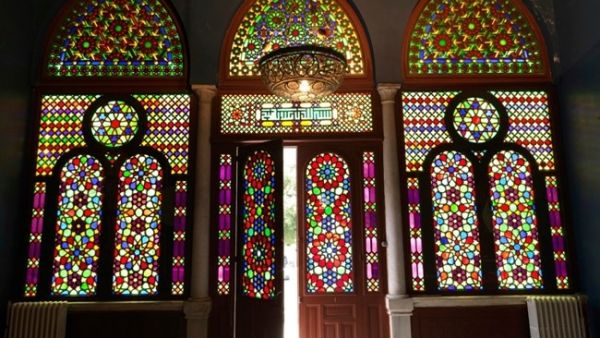“It was the first major shock I’ve had in my life,” Camille Tarazi said of the Aug. 4 blast. “The first thing you think about is the people who were killed or those who lost their homes.
“Then you start to think about the heritage, when you see your family’s work, as well as your own, completely destroyed in a few seconds.”
Hailing from five generations of craftsmen, Tarazi has spent his career creating arabesque furniture and decorative elements for heritage houses. His family is responsible for some of the most detailed pieces adorning the halls of Sursock- Cochrane Palace, Villa Linda Sursock and the Sursock Museum, to name a few.
When the blast hit the houses containing Maison Tarazi’s woodwork, the pieces were splintered into thousands of pieces.
“It’s like killing the soul of the people who worked for many years creating and restoring these pieces and even the soul of the owner vanishes through these items,” Tarazi told The Daily Star. “These pieces have escaped civil war, all kind of bombings and fires. This violent event was the one that did it.
“There is a kind of rage that drives you to bring it all back, to keep something for the next generation, and I consider it my duty to do this.”
Camille Tarazi is a descendant of Dimitri Tarazi, whose family first opened an antique oriental furniture shop in 1862. As the family expanded, sons took up the profession and opened their own showroom. The venture thus spread from Beirut to Jerusalem, Damascus, Cairo and Rabat.
Tarazi has spent many years researching his family’s legacy, and in 2015 published a book titled “Vitrine de l’Orient,” which documented their involvement in some of the Middle East’s best-known heritage buildings.
After working for years with his father, in 2016 Michel, Tarazi followed custom and opened his own place in Mar Mikhael. The shop, housing pieces in the process of being made or restored, was blown apart by the blast.
In the days following Aug. 4, Tarazi has been visiting ruined homes, hoping to repair or salvage the destroyed elements, such as a Maison Tarazi-made frame of a prominent triple-arch window.
“Villa Linda Sursock is one of the oldest houses in the area,” Tarazi observed. “Built in 1875, it belonged to Michele and Linda Sursock, and around 1905-08 they ordered from our family a triple arch window, which has been completely destroyed into tiny pieces. We’re hoping the family will want to restore and reproduce the arcade, which is unique.
“The house also had doors with arabesque details which were destroyed, so we’re ready to get to work and return then to how they were before,” he added. “The window at Villa Linda was a special one, with unique stained glass designs with geometric pattern and carving in the wood.”
Sursock-Cochrane Palace will need work on its doors and staircases, as well as a copper door fitted in 1915. It was ripped from its hinges walls and split into three pieces during the blast, but it can be fixed.
“The more delicate woodwork will need to be done again from scratch,” Tarazi said. “We’ve done new woodwork for Sursock Museum too, for the lobby, but for the carved woodwork in the study upstairs, we might have to do some new elements and reproduce them with the same designs and patterns.”
While the repair of furniture and decorative elements isn’t a priority for some home-owners right now, Tarazi has still been collecting the shattered elements and details, for a time when people will be able to have these antiques restored.
“During the second phase of aid, the owners should receive something to cover the costs of these interior details and furniture,” he said. “Some private houses have oriental pieces that have been splintered but by saving the pieces we can recreate these.
“I’ve been gathering and putting away all the salvaged elements,” he added, “as we can use these items as a reference, or to try to repair them when the owners are ready.”
This article has been adapted from its original source.








